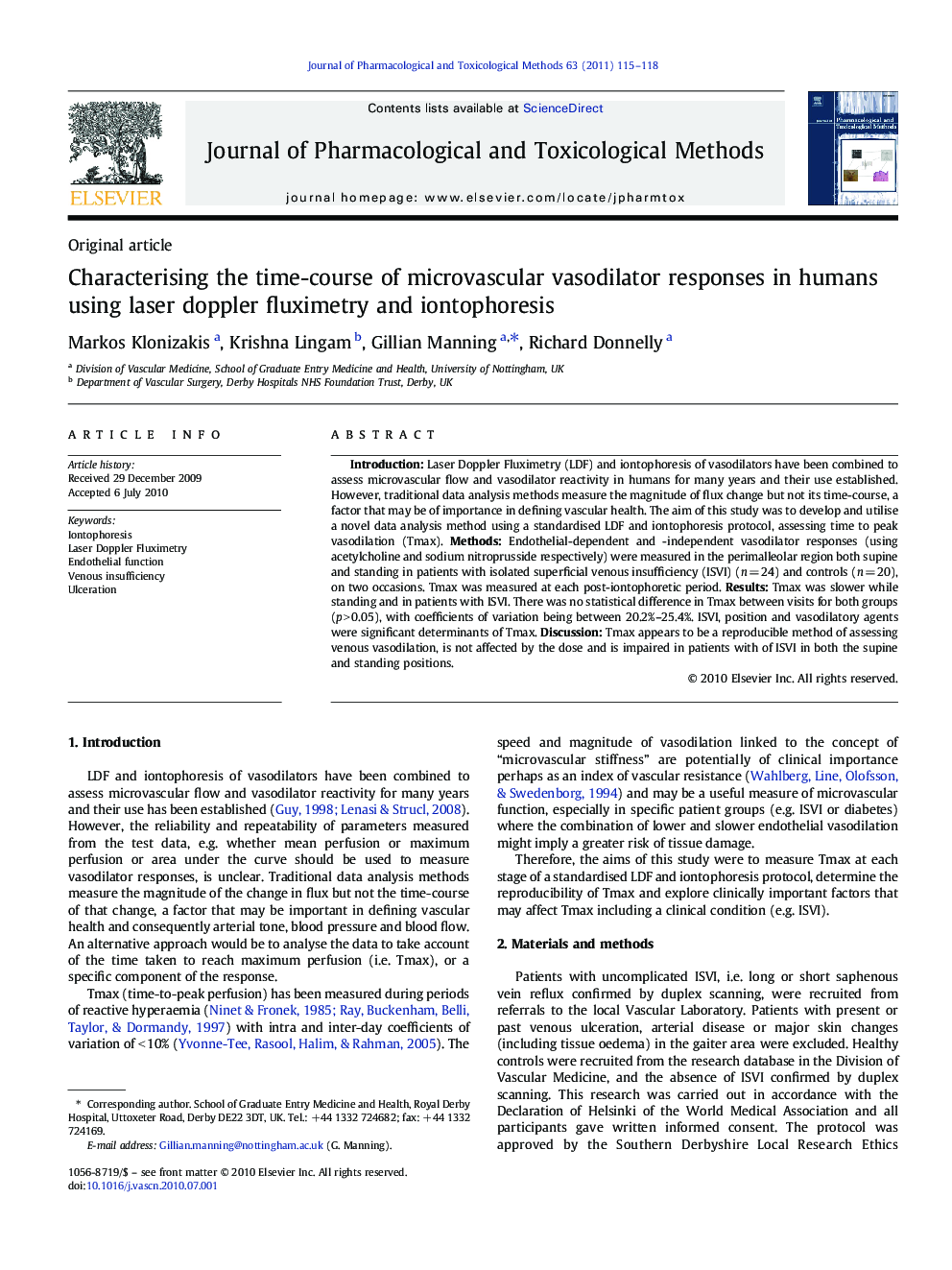| Article ID | Journal | Published Year | Pages | File Type |
|---|---|---|---|---|
| 2549908 | Journal of Pharmacological and Toxicological Methods | 2011 | 4 Pages |
IntroductionLaser Doppler Fluximetry (LDF) and iontophoresis of vasodilators have been combined to assess microvascular flow and vasodilator reactivity in humans for many years and their use established. However, traditional data analysis methods measure the magnitude of flux change but not its time-course, a factor that may be of importance in defining vascular health. The aim of this study was to develop and utilise a novel data analysis method using a standardised LDF and iontophoresis protocol, assessing time to peak vasodilation (Tmax).MethodsEndothelial-dependent and -independent vasodilator responses (using acetylcholine and sodium nitroprusside respectively) were measured in the perimalleolar region both supine and standing in patients with isolated superficial venous insufficiency (ISVI) (n = 24) and controls (n = 20), on two occasions. Tmax was measured at each post-iontophoretic period.ResultsTmax was slower while standing and in patients with ISVI. There was no statistical difference in Tmax between visits for both groups (p > 0.05), with coefficients of variation being between 20.2%–25.4%. ISVI, position and vasodilatory agents were significant determinants of Tmax.DiscussionTmax appears to be a reproducible method of assessing venous vasodilation, is not affected by the dose and is impaired in patients with of ISVI in both the supine and standing positions.
